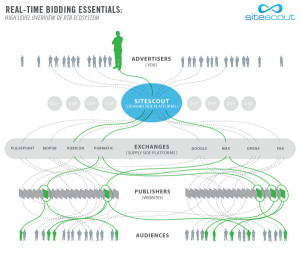Have you ever fixed a run-down car or built a computer? There’s usually a lot of staring and tweaking, testing and cursing involved. Understand how each piece functions, though, and you’re on your way to a smooth run.
Programmatic marketing is kind of like that. With so much money at stake, one little slip-up could cost you big. So let’s take a look under the hood.
Just What Is Programmatic Marketing?
Programmatic Marketing: a digitally-triggered event related to marketing, deployed by software that is governed by a set of rules determined through algorithms.
 When utilized correctly, programmatic marketing takes out the guesswork in favor of data-driven results. Most marketers use software systems to minimize labor and maximize such results, automating actions that are triggered by events.
When utilized correctly, programmatic marketing takes out the guesswork in favor of data-driven results. Most marketers use software systems to minimize labor and maximize such results, automating actions that are triggered by events.
Image via SiteScout. Check them out if visualizations turn your dials up to ten.
And not unlike your lemon or super computer, for a programmatic system to operate, there must be a specified purpose to its creation. For the purposes of today and the posts to follow, let’s dive into five key facets that keep this system running.
Five Key Facets of Programmatic Marketing
Ever participated in a live auction? Real Time Bidding (RTB) is like that—minus the annoying auctioneer. You, the advertiser, bid on open ad placements in a digital auction house run by ad networks and filtered by a Demand Side Platform (DSP). If you win the bid by being the highest bidder according to that auction algorithm, your ad is sent to the publisher’s site, and whoop! There it is.
3) Publisher
A publisher is a website or owner of ad inventory that wants to sell space on their platform to any advertiser keen on reaching that publisher’s audience. Simple, I know.
4) Demand Side Platforms (DSP)
A little less simple is the DSP. Made for advertisers, the DSP is like the dermal layer of an RTB system. A DSP aggregates and analyzes inventory from Supply Side Platform (SSP) databases and programmatically filters the information so advertisers can find the inventory that’ll best fit their needs. After sorting through qualifiers like demographics, price, and preference, advertisers place a bid on the inventory through the DSP. If they win, their advertisement will appear on the publisher’s site.
If you’re so excited about RTB you just can’t sleep, read more about it here.




